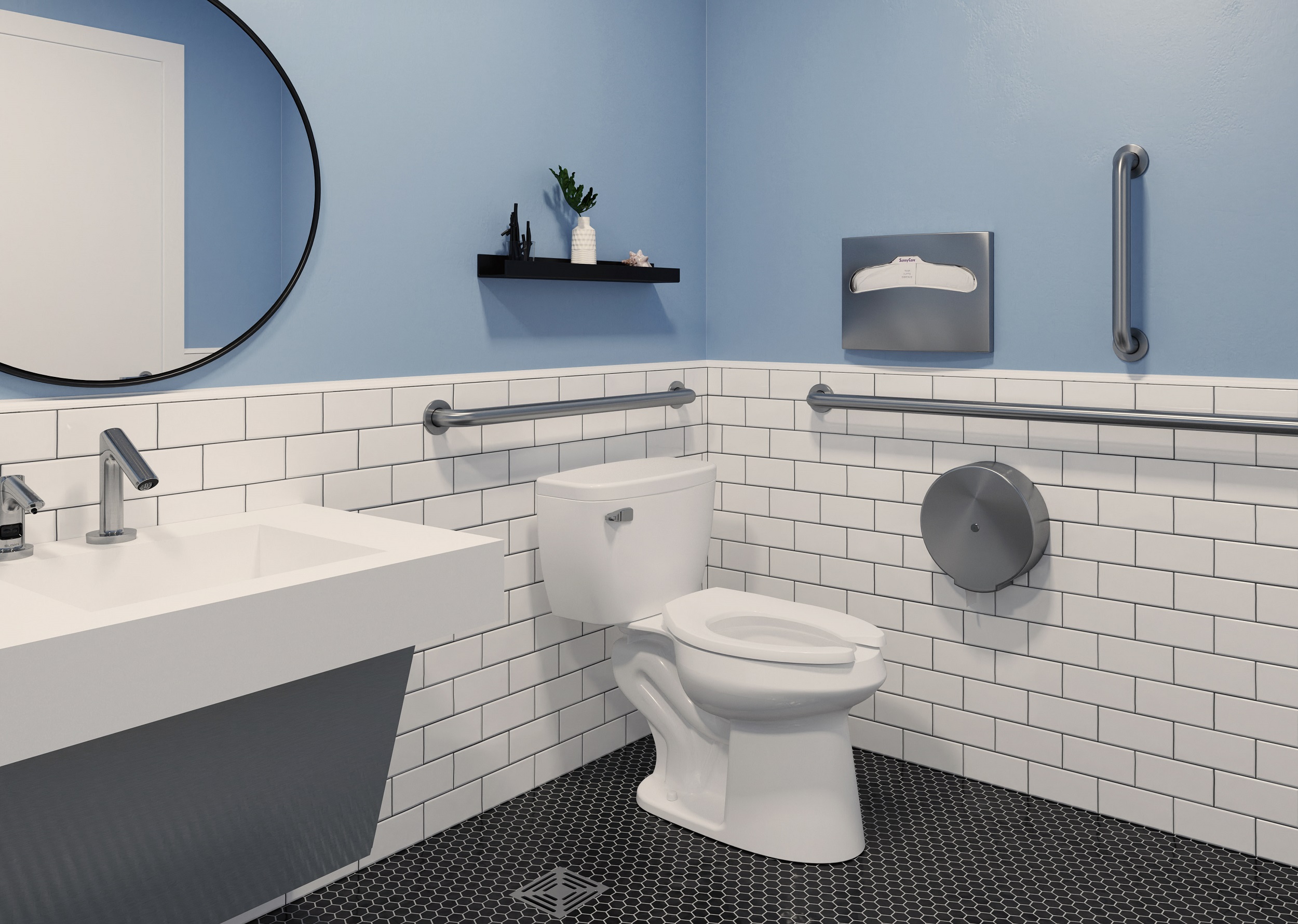Sloan’s new pressure-assisted toilet may look like an ordinary tank-toilet, but its performance is anything but ordinary.
That’s because—along with Flushmate’s 503UH series pressure-assist system—Sloan is now delivering the world’s first ultra-high efficiency 0.75 gpf toilet. The advanced technology efficiently eliminates waste, keeps toilet bowls clean, and saves water and costs with every flush.
We spoke with Rolando Zambrano, Sloan Product Line Manager, Flushometers and Fixtures, to discuss this new innovation and how it helps with water efficiency, supports facility maintenance, and reduce the cost of ownership.
How do Sloan’s pressure-assisted toilets differ from traditional gravity fixtures?
Pressure-assisted toilets differ from gravity in that they introduce the powerful flush you get from a traditional commercial toilet flushometer with an existing water supply designed for residential or light commercial style applications. As a result, you don’t need that one-inch water supply line that you would for a flushometer installation. With Sloan pressure-assisted toilets, you use a 3/8 supply line with 20 PSI pressure, which gives you the same powerful flush without the limitations that come with a larger water supply line. Essentially, it opens up the opportunities where pressure-assisted toilets can be installed.
How was Sloan able to achieve gallons per flush as low as 0.75 gpf, more than half of 1.6 gpf?
The answer is really two-fold. It all comes down to the hydraulic design of the porcelain fixture and the ceramic bowl, as well as the state-of-the-art technology that Flushmate® brings to the table. As we combined these two powerful technologies, we were able to launch a product that the world has never seen before.
Aside from water saving benefits, how do Sloan’s pressure-assisted toilets help support facility maintenance?
One of the most notable benefits of pressure assisted technology is the drainline carry performance. The toilet has a drainline carry of up to 60 feet, which is 50% longer than the ASME standard. Additionally, the system delivers a powerful rinse, helping to maintain bowl cleanliness and reducing the maintenance team’s cleaning burden.
How were Sloan pressure-assist toilets designed with the customer in mind?
The new 0.75 gpf pressure-assisted toilets were designed with water conservation as a leading component, but there are a number of other benefits which help lower the cost of ownership. Sloan’s innovation delivers powerful performance at low flush volumes, while refilling faster than gravity toilets. The innovative three-point tank mounting system also ensures a tighter and more reliable gasket seal to minimize the risk of leaks and part damage.
From a maintenance perspective, the rim jets’ higher velocity and pressure create a better scrub, keeping the bowl cleaner with every flush. Adding SloanTec® Hydrophobic Glaze inhibits the growth of germs and bacteria, making the fixture easier to clean and keeping it cleaner longer. The pressure vessel’s superior insulating properties also work to prevent tank condensation and keep the toilet tank’s exterior dry.
In terms of gpf in pressure-assist systems, how low is too low?
There's always concern when it comes to drainline carry, but there have been other competitors in the market offering a 0.8 gpf for several years. One of the tremendous advantages that Sloan brings to the table is not only the know-how, but the testing and rigorous requirements that the product needs to go through before it goes to market.
We offer not only the lowest gallons per flush toilet in the market, but also regulatory compliance and we exceeded standards. We’re very proud to bring our 0.75 gpf pressure-assisted toilets to market using the lowest amount of water and still providing efficient results and advanced performance.
Its important that customers are aware that installing low gpf systems in older applications can lead to issues, as the lowest volume product are really designed for new buildings as opposed to retrofitted or antiquated systems that use traditional 3.5 gallon tanks.
A number of commercial venues aren’t always plumbed for a pressure-assist flushometer, preventing them from enjoying the benefits of pressure-assist performance. How does Sloan’s new innovation work to counteract this issue?
This new pressure-assist technology opens the door to more light commercial applications in more remote areas. This is a very important factor because some remote areas aren’t plumbed with a great water supply line. As these locations need to install a powerful flush, Sloan has brought an efficient solution to market which uses a standard water supply line.
Sloan has been a leader in water conservation since its founding in 1906. How does this next step further Sloan’s commitment to water stewardship?
This is not the first time Sloan has led the way in something related to water conservation, and it’s not going to be the last. These sustained efforts start at the top with our leadership and apply to the entire organization. We are listening to the questions and concerns our customers bring to our attention and apply these insights to design solutions that help them provide an excellent facility experience.
Manténgase al Día
Regístrese para recibir notificaciones por correo electrónico y actualizaciones del blog de Sloan
